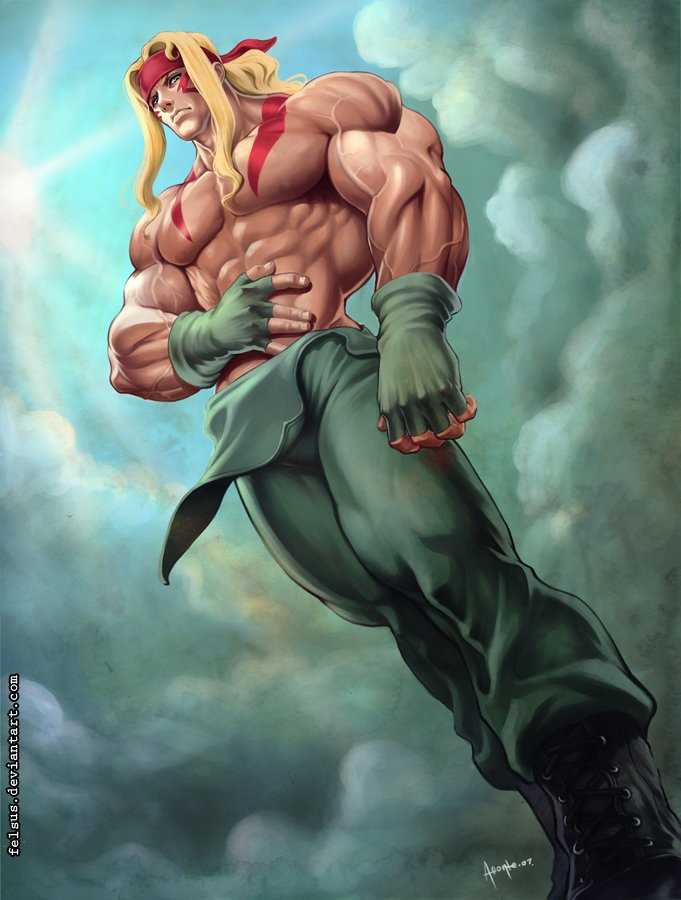Street art graffiti lettering is a form of artistic expression that has gained popularity and recognition around the world. It is characterized by its bold and vibrant style, which often incorporates various techniques and elements to create visually striking compositions.
The art of graffiti lettering can be traced back to the early days of street art, where artists would use spray paint and other materials to leave their mark on public spaces. Over time, graffiti lettering evolved into a distinct form of art, with artists developing their own unique styles and techniques.
What sets street art graffiti lettering apart is its ability to convey powerful messages and emotions through the use of typography and design. Artists often use words, phrases, or even entire sentences to communicate their thoughts and ideas, making street art graffiti lettering a powerful tool for social and political commentary.
Street art graffiti lettering has not only become a means of self-expression for artists, but it has also become a way to beautify urban environments and engage with the community. Many cities around the world have embraced graffiti lettering as a legitimate art form and have created designated spaces for artists to showcase their work, turning once dull and uninspiring walls into vibrant and captivating pieces of art.
The Origins of Graffiti Lettering
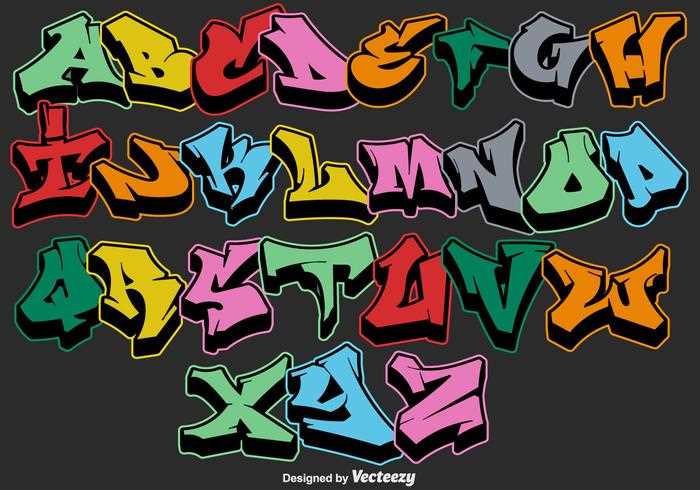
Graffiti lettering has a rich history that dates back several decades. It originated as a form of art expression in the streets of Philadelphia and New York City in the 1960s.
The early graffiti lettering artists were young people who wanted to make a statement and leave their mark on the city. They used spray paint and markers to create large, colorful letters that covered walls, buildings, and subway trains.
The origins of graffiti lettering can be traced back to the hip-hop and punk rock movements of the time. Artists were inspired by the bold and rebellious spirit of these subcultures and sought to express themselves through their unique lettering styles.
Graffiti lettering quickly gained recognition and popularity as a new form of urban art. It became a way for artists to communicate with the public and to challenge the social and political norms of the time.
Over the years, graffiti lettering has evolved and diversified, with artists developing their own distinctive styles and techniques. It has also gained recognition as a legitimate form of art, with museums and galleries showcasing graffiti lettering exhibitions.
Today, graffiti lettering continues to be an important part of street art culture. It can be seen in cities all over the world, with artists using different materials and techniques to create their work. Graffiti lettering remains a powerful and expressive form of artistic communication.
Whether it’s large, colorful bubble letters or intricate, calligraphy-inspired designs, graffiti lettering continues to captivate and inspire both artists and viewers alike.
The Style and Techniques of Graffiti Lettering
Graffiti lettering is a distinctive style of writing that has gained popularity in urban art culture. Artists use various techniques to create eye-catching and unique letterforms that express their individuality and personal messages.
1. Tags

Tags are the most basic form of graffiti lettering. They are quick, stylized signatures usually done with one color and a marker or spray paint. Tags are often repetitive, overlapping, and illegible to the untrained eye. They serve as a way for graffiti artists to leave their mark and establish their presence in an area.
2. Throw-ups
Throw-ups or throwies are larger versions of tags that are typically done with three colors: an outline, a fill, and a background. These letterforms are still quick and stylized but may add more complexity and depth compared to tags. Throw-ups are often done with a spray can and can be created relatively quickly.
3. Wildstyle
Wildstyle is a complex and intricate form of graffiti lettering that often incorporates arrows, abstract shapes, and other design elements. It is characterized by overlapping, interlocking, and bending letters, making the artwork more difficult to read. Wildstyle requires advanced skill and can take a significant amount of time to create.
4. 3D Lettering
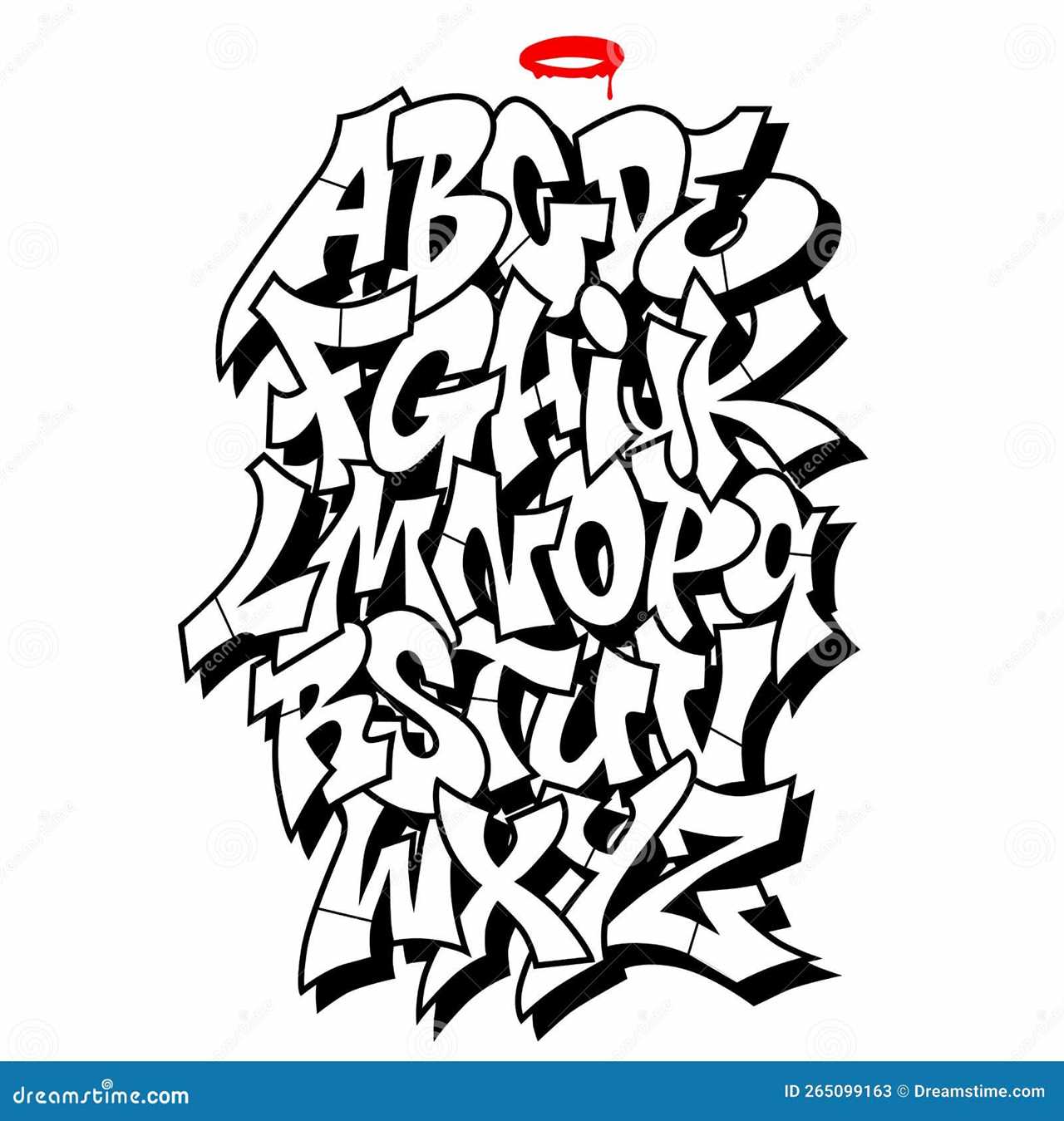
3D lettering is an exciting technique that gives the illusion of depth and dimension to graffiti letterforms. Artists use shading, highlights, and shadows to create a three-dimensional effect. This technique requires an understanding of light and perspective and can make the artwork appear more dynamic and lifelike.
The Importance of Color in Graffiti Lettering
1. Capturing Attention

One of the main reasons why color is important in graffiti lettering is its ability to capture attention. The vibrant and bold colors used in graffiti can quickly grab the viewer’s eye amidst the dull and monotonous surroundings. The use of contrasting colors can make the lettering pop and stand out from the background, ensuring that it doesn’t go unnoticed.
2. Setting the Mood
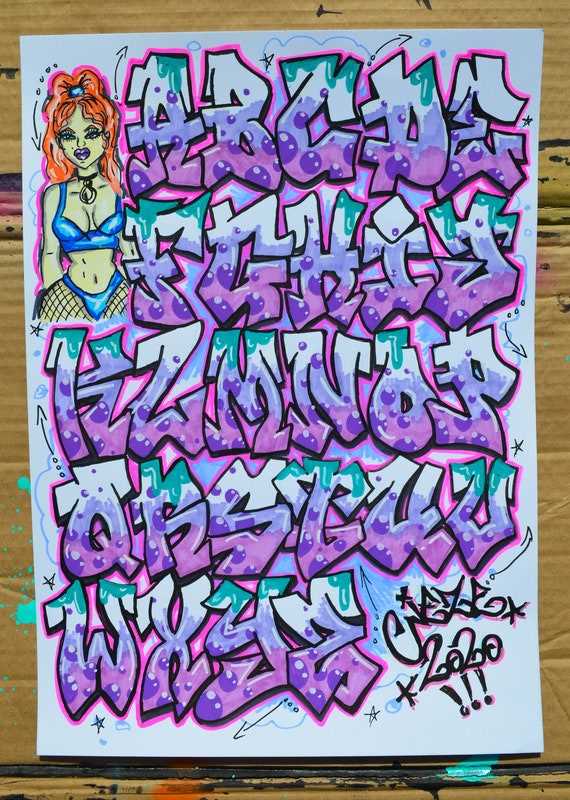
Color has the power to convey emotions and set the mood in graffiti lettering. Different colors evoke different feelings and can help the artist express their intended message. Bright and colorful lettering can create a sense of joy and energy, while darker and muted colors may convey a more mysterious or rebellious atmosphere. The choice of color palette is essential in communicating the intended mood of the graffiti piece.
Moreover, color can also enhance the lettering’s overall style and theme. It can be used to emphasize certain parts of the design or create visual depth and texture. The strategic use of color can make the lettering more visually appealing and captivating.
3. Personal Expression
Color is a powerful tool for self-expression in graffiti lettering. Artists can use color to reflect their personal style and identity. Whether it be using bright and bold colors to represent their energetic personality or using a more subdued color palette to convey a sense of mystery, the choice of colors can be deeply personal and reflective of the artist’s individuality.
Furthermore, color can also be used to represent certain cultural references or symbols within graffiti lettering. Artists often incorporate specific colors that are associated with their communities or convey a particular message. This adds another layer of meaning and depth to the artwork.
Distinct Expressions of Urban Culture
Street art graffiti lettering is not just about vandalism or defacing public property. It is a form of self-expression that captures the spirit and energy of urban culture. From the vibrant colors to the provocative messages, graffiti art is a powerful medium for urban artists to communicate their thoughts and ideas.
The Evolution of Street Art Graffiti Lettering

Street art graffiti lettering has its roots in the rebellious subcultures of the 1960s and 1970s. What started as a form of defacement soon evolved into a respected art form, with artists like Keith Haring and Jean-Michel Basquiat bringing graffiti into the mainstream art scene.
In recent years, graffiti lettering has become more diverse and innovative. Artists use a variety of techniques, such as stenciling and calligraphy, to create unique and eye-catching designs. These distinctive styles not only enhance the visual appeal of the artwork but also reflect the artist’s individuality and creativity.
Expressing Identity and Social Commentary
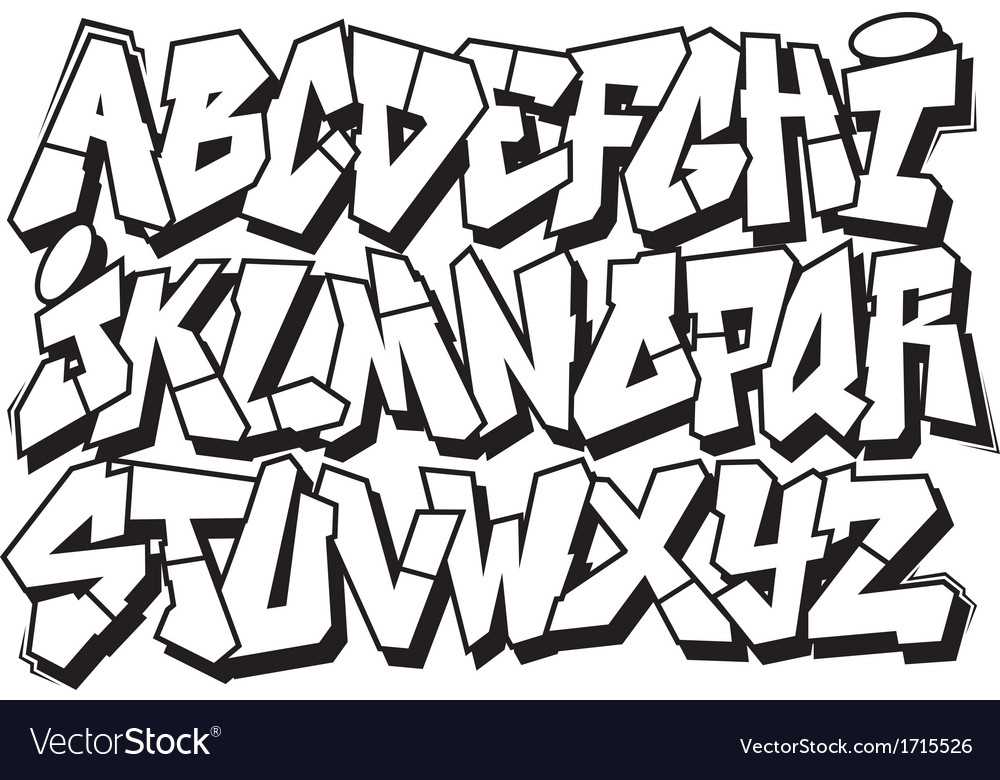
Street art graffiti lettering serves as a powerful tool to express identity and social commentary. Artists often use their artwork to address pressing social issues, such as poverty, inequality, and discrimination. Through their bold and thought-provoking messages, graffiti artists aim to create awareness and spark conversations about these topics.
Moreover, the urban landscape becomes a canvas for artists to reclaim public spaces and challenge the status quo. In cities around the world, graffiti lettering can be found on walls, buildings, and even train cars, transforming these spaces into dynamic and visually engaging environments.
| Key Features of Street Art Graffiti Lettering: |
|---|
| 1. Vibrant colors and bold outlines |
| 2. Intricate and unique typography |
| 3. Messages of social commentary and identity |
| 4. Influences from various art forms, such as calligraphy and graphic design |
| 5. Diverse styles and techniques |
Legal and Illegal Aspects of Street Art
Street art, including graffiti lettering, intersects with the law in various ways. While some forms of expression are considered legal, others fall into the realm of illegal activities. Understanding the legal framework surrounding street art is crucial for both artists and enthusiasts.
Legal Street Art
Legal street art exists within certain boundaries defined by local laws and regulations. Many cities around the world, including London, Berlin, and Melbourne, have designated areas where artists can freely create murals and graffiti art. These areas are often referred to as “legal walls” or “street art parks.” Artists must obtain permission from the property owner or relevant authorities to paint in these designated locations.
Public art projects, organized by local governments or private organizations, also provide opportunities for street artists to create legal works. These projects aim to beautify public spaces and often involve collaboration between artists and community members. Artists are usually given a specific theme or subject to work with and must adhere to the guidelines set by the project organizers.
Illegal Street Art
Illegal street art refers to graffiti or other forms of unauthorized public art that is created without the consent of property owners or local authorities. This type of art is often associated with vandalism and can result in criminal charges, fines, or even imprisonment.
Many jurisdictions have laws that prohibit graffiti or defacement of public or private property. These laws aim to prevent damage to buildings and the visual pollution of public spaces. The penalties for illegal street art vary depending on the jurisdiction, but they can be severe in some cases.
There is ongoing debate about whether street art should be considered a legitimate form of artistic expression or simply an act of vandalism. Some argue that street art adds vibrancy and character to urban environments, while others believe that it undermines public order and property rights.
The Impact of Graffiti Lettering on Urban Spaces
Graffiti lettering has become a ubiquitous presence in urban spaces around the world. Its vibrant colors, bold lines, and expressive typography have transformed blank walls and neglected spaces into captivating works of art. Beyond its visual appeal, graffiti lettering has a profound impact on the urban environment.
One of the key impacts of graffiti lettering is its ability to challenge traditional notions of public space. By claiming walls and surfaces that were previously unremarkable, graffiti artists bring attention to the overlooked corners of the city. Their lettering becomes a visual declaration of existence and creativity in the face of a homogeneous and sterile urban landscape.
Graffiti lettering also serves as a form of communication, conveying messages and ideas that may not be represented in mainstream media or official city messaging. From political statements to personal narratives, graffiti provides a platform for marginalized voices to be heard and seen. It sparks dialogue and engages viewers, inviting them to reflect on the social, cultural, and political issues that shape the city.
Furthermore, graffiti lettering engenders a sense of ownership and identity within the urban community. It often represents the local culture, history, and values, creating a visual tapestry that resonates with residents. Graffiti artists are seen as both artists and activists, contributing to the collective identity of the neighborhood or city.
However, it is important to note that graffiti lettering can be controversial. While some view it as an art form that adds character to the urban landscape, others see it as vandalism and an act of defacing public property. The legality and ethics of graffiti continue to be debated, with different cities and municipalities adopting varying approaches to its presence.
Appreciating Street Art: A Growing Trend
Street art, especially graffiti lettering, has become increasingly popular in recent years. What was once considered vandalism is now being recognized as a legitimate art form. People from all walks of life are starting to appreciate the creativity and skill that goes into creating these pieces.
One of the reasons why street art is gaining popularity is its accessibility. Unlike traditional art forms that are often confined to galleries and museums, street art can be found in public spaces, making it accessible to anyone who happens to pass by. It brings art to the streets and showcases it to a wider audience.
Furthermore, street art has a way of transforming the mundane and ordinary into something extraordinary. It can turn a plain brick wall into a vibrant and captivating masterpiece. The use of bold colors, intricate designs, and clever lettering can instantly catch the eye and brighten up a neighborhood.
Another reason why street art is appreciated is its ability to start conversations and spark dialogue. Artists use their work to comment on social, political, and cultural issues. They create thought-provoking pieces that challenge the status quo and make people think. Street art has the power to ignite change and inspire action.
Not only is street art visually appealing, but it also adds a sense of character and identity to a city or neighborhood. It can become a symbol of pride and unity for locals. Street art festivals and events have also become popular, attracting tourists from around the world who want to experience the vibrant art scene of a city.
Overall, street art is more than just graffiti; it is a growing trend that is reshaping the way we view and appreciate art. Its accessibility, ability to transform spaces, spark dialogue, and create a sense of identity make it a unique and impactful art form. So, next time you come across a graffiti lettering on a street, take a moment to appreciate the talent and creativity behind it.

I am a mural enthusiast and a fervent admirer of street art. Rather than creating murals myself, I am passionate about collecting them. My love for street art knows no bounds. I am dedicated to curating and cherishing these artworks that grace the streets. My collection stands as a testament to my profound appreciation for this form of artistic expression.
read about me



